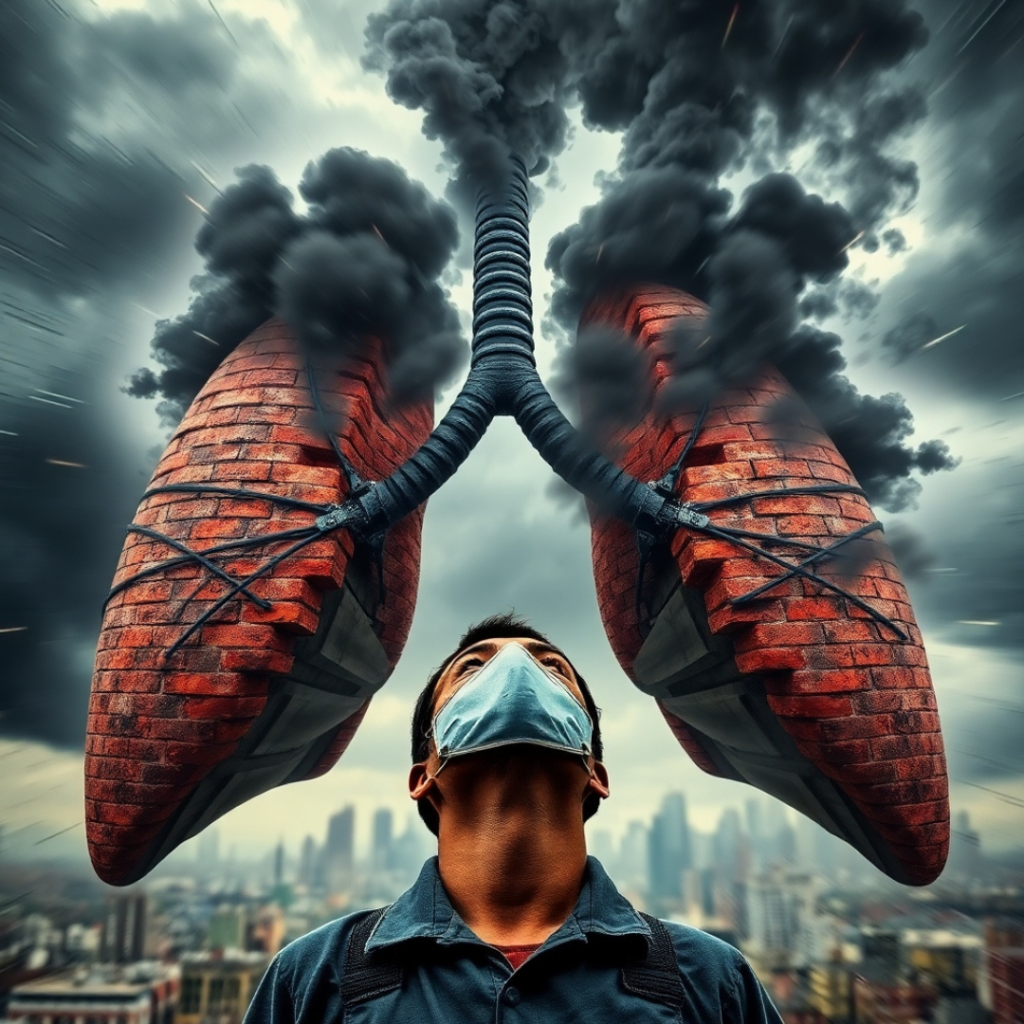
Lung Cancer Causes: Understanding the Risks and How to Take Control
Lung cancer is one of the leading causes of cancer-related deaths worldwide. You might assume it only affects smokers, but did you know that about 1 in 5 lung cancer cases occur in non-smokers? Understanding the factors that lead to lung cancer can make a difference in prevention and early detection. Whether you’re a smoker, a former smoker, or have never smoked, it’s crucial to know your risks.
Lung cancer develops when cells in the lungs grow uncontrollably, forming tumors that interfere with normal lung function. The two primary types are non-small cell lung cancer (NSCLC) and small cell lung cancer (SCLC). NSCLC is the most common, accounting for around 85% of cases. Both types can grow quickly, but early detection can make all the difference in treatment options and survival rates.
If you’re curious about the survival rates by age, check out our comprehensive guide on Liver Cancer Survival Rate by Age.
Let’s explore the major causes of lung cancer, how they affect you, and what you can do to lower your risks.
What Are the Causes of Lung Cancer?
While smoking remains the leading cause of lung cancer, other factors also contribute to lung cancer risk. It’s essential to understand that non-smokers can develop lung cancer too. Learn more about Lung Cancer Stages and Prognosis to understand how cancer progression affects treatment.
1. Smoking: The Biggest Risk Factor
It’s no surprise that smoking is the number one cause of lung cancer, accounting for about 85% of cases. Tobacco smoke contains harmful chemicals that damage lung cells over time, leading to mutations that can result in tumor formation. However, it’s not just direct smoking that’s harmful—secondhand smoke exposure also increases the risk of lung cancer for non-smokers.
How smoking contributes to lung cancer:
The harmful chemicals in cigarettes cause mutations in lung cells.
Over time, these mutations can lead to uncontrolled cell growth and tumor formation.
Quitting smoking can significantly reduce your lung cancer risk—your lungs begin to repair themselves right away.
If you’re currently a smoker, quitting is one of the most important steps you can take to lower your risk. There are numerous resources available to help you quit, including counseling and support groups. For more information on warning signs, check out our guide on Lung Cancer Symptoms to Watch For.

2. Environmental Exposure: Radon and Air Pollution
While smoking is the most significant factor, other environmental exposures can also increase lung cancer risk. One of the most dangerous is radon gas—a radioactive gas produced from the natural decay of uranium found in soil, rock, and water. It can seep into homes through cracks in the foundation, accumulating without any visible or odor warnings. Radon exposure is the second leading cause of lung cancer in non-smokers.
How Radon Increases Lung Cancer Risk:
Radon gas can accumulate in poorly ventilated areas, especially in basements or lower levels of buildings.
Long-term exposure to high radon levels can damage lung tissue, increasing the likelihood of cancer development.

Air pollution is another significant environmental risk. Particulate matter from vehicle exhaust, industrial emissions, and even wildfire smoke can contain carcinogens. Prolonged exposure to polluted air can trigger chronic inflammation in the lungs, creating a setting that fosters cancerous changes. To learn about symptoms that might indicate lung issues, see our post on Early Signs of Lung Cancer.
What You Can Do:
Test your home for radon: Many states offer low-cost or free radon testing kits. Learn more about radon testing and safety from the Environmental Protection Agency (EPA).
Increase ventilation: Open windows and use ventilation systems to reduce indoor radon levels.
Limit exposure to air pollution: Stay indoors on high-pollution days and use air purifiers to reduce indoor particulate levels.
Monitor local air quality: Use apps or websites that track air pollution levels in your area.
By being aware of environmental risks and taking preventive measures, you can lower your lung cancer risk even if you don’t smoke.
3. Occupational Hazards: Asbestos and Chemicals
Certain occupations expose workers to cancer-causing chemicals, significantly increasing the risk of lung cancer. One of the most notorious culprits is asbestos—a fibrous mineral that was once widely used in construction, insulation, and manufacturing. When asbestos fibers are inhaled, they can embed into lung tissue, leading to inflammation and eventually causing lung cancer or mesothelioma. Although its use has declined, asbestos exposure is still a risk, particularly in older buildings and some industrial settings. To understand how advanced stages of lung cancer are managed, visit Advanced Lung Cancer Stages and Treatment.
But asbestos isn’t the only occupational hazard. Other carcinogenic substances commonly found in workplaces include arsenic, diesel exhaust, formaldehyde, and silica dust. Jobs in construction, mining, manufacturing, and automotive industries put workers at increased risk of chronic lung damage, which can lead to cancerous changes.
How Occupational Hazards Increase Lung Cancer Risk:
Inhaling asbestos fibers can cause scarring and cellular mutations in the lungs.
Long-term exposure to diesel exhaust can lead to chronic inflammation, creating an environment where cancerous growths are more likely.
Inhaling silica dust during construction work can cause silicosis, a lung disease that increases the risk of lung cancer.
Follow safety protocols: Wear protective equipment such as masks and respirators when working with hazardous materials. Regularly check and replace safety gear to ensure maximum protection.
Know your rights: Employers must comply with OSHA regulations to protect workers from harmful substances. Stay informed about your workplace safety standards and learn more from the Occupational Safety and Health Administration (OSHA).
Get regular health checkups: Periodic lung screenings can help detect changes before they progress. Early detection allows for timely intervention, which can significantly improve outcomes.
Report unsafe conditions: If you encounter unsafe work practices, report them to OSHA for investigation and resolution. Keeping records of reported incidents can also help support your case if needed.
By being proactive and following safety guidelines, you can help minimize your risk of developing lung cancer due to occupational hazards.

4. Family History and Genetic Factors
While lifestyle choices like smoking and environmental exposure are significant, genetics can also play a role in lung cancer risk. If a close relative, such as a parent or sibling, has been diagnosed with lung cancer, your risk may be higher—even if you’ve never smoked. This increased risk may be due to inherited genetic mutations that make lung cells more susceptible to cancerous changes.
Research has shown that specific gene mutations, like EGFR, ALK, and KRAS, can increase the likelihood of developing non-small cell lung cancer (NSCLC). Even if you don’t carry these mutations, having a family history of lung cancer may still indicate a predisposition. Some families may also share environmental risk factors, like exposure to secondhand smoke or radon, which can complicate pinpointing the exact cause.

What You Can Do:
Know your family medical history: Talk with relatives about any history of lung cancer or related health conditions. Keeping a record of family medical history can provide valuable information for your healthcare provider.
Discuss genetic testing with your doctor: If you have a strong family history, consider genetic counseling to assess your risk. Your doctor can guide you on whether genetic testing is appropriate.
Stay proactive with screenings: If your family history indicates a higher risk, talk to your healthcare provider about starting lung cancer screening earlier. Regular low-dose CT scans (LDCT) can catch early changes that might otherwise go unnoticed.
Be mindful of environmental factors: Even if genetics play a role, reducing environmental exposures like smoking and radon can still lower your overall risk. Consider using radon detectors and air purifiers to maintain a healthier living environment.
Being aware of your genetic risk and taking proactive steps to minimize environmental triggers can help you reduce your chances of developing lung cancer.
5. Pre-existing Lung Conditions: COPD and Other Diseases
Chronic lung diseases like Chronic Obstructive Pulmonary Disease (COPD) and pulmonary fibrosis can significantly increase the risk of developing lung cancer. Learn more about Lung Cancer Symptoms to stay informed. These conditions cause ongoing damage and inflammation in the lungs, creating an environment where cancerous changes are more likely to occur. Discover whether Lung Cancer is Treatable and explore the most promising treatment options. Additionally, people living with COPD or similar conditions often experience persistent symptoms that can mask early signs of lung cancer, delaying diagnosis.
Having a history of respiratory infections, such as pneumonia or tuberculosis, may also elevate your risk, especially if lung tissue was damaged. This chronic inflammation can compromise lung function, making it more susceptible to cancerous changes. Additionally, repeated lung infections can lead to scarring, further increasing the vulnerability of lung tissue over time.

What You Can Do:
Manage your lung condition: Follow your doctor’s treatment plan to reduce inflammation and maintain lung health. Staying consistent with prescribed medications can help control symptoms and improve lung function.
Get regular check-ups: Frequent monitoring can help catch early signs of lung cancer before they progress. Discuss your symptoms with a healthcare provider and consider low-dose CT scans for early detection.
Prioritize lung health: Practice deep breathing exercises and avoid exposure to lung irritants like tobacco smoke or air pollution. Keeping your environment clean and using air purifiers can also support healthier lungs.
Consider screening: If you have a long history of lung disease, discuss screening options with your healthcare provider to detect any changes early. Regular lung cancer screenings can help identify problems before they become severe.
Managing chronic lung conditions proactively can reduce your overall lung cancer risk and improve your quality of life.
Lung Cancer Risk Factors for Non-Smokers
If you’re a non-smoker, you might be surprised to learn that you can still develop lung cancer. In fact, about 1 in 5 lung cancer diagnoses occur in people who have never smoked. Find out more about Lung Cancer Early Symptoms to protect yourself. As we’ve discussed, factors like radon exposure, air pollution, and family history can significantly increase the risk of developing lung cancer, even in those who have never picked up a cigarette. Understanding these risk factors is essential for taking proactive steps to protect your lung health.
Non-smokers can also face increased risk from occupational exposure to harmful substances and pre-existing lung conditions. Additionally, secondhand smoke and environmental pollutants may further elevate the risk. Recognizing these risk factors is an important step toward safeguarding your health.
What You Can Do to Lower Your Risk:
Quit smoking if you’re a smoker: Even if you haven’t smoked in years, quitting today can still lower your lung cancer risk. For resources on quitting, visit the American Lung Association.
Test for radon: Make improvements to your home’s ventilation to reduce radon levels. Learn more about radon testing and mitigation from the Environmental Protection Agency (EPA).
Reduce exposure to air pollution: Stay indoors on high-pollution days and monitor local air quality reports. Using air purifiers can help improve indoor air quality.
Get regular screenings: If you’re at risk—especially if you’re a former smoker or have a family history of lung cancer—talk to your doctor about lung cancer screening options. Regular low-dose CT scans are recommended for those at high risk.
Taking preventive measures, even as a non-smoker, can significantly lower your lung cancer risk and support overall lung health.
The Importance of Early Detection
Early detection of lung cancer can make all the difference when it comes to survival. Learn more about the Latest Advances in Lung Cancer Treatment to stay updated. Catching lung cancer in its initial stages significantly improves the chances of successful treatment. One of the most effective methods for detecting lung cancer early is the Low-Dose CT Scan (LDCT). This imaging test can find small lung nodules that might be cancerous, even before symptoms appear. According to the National Cancer Institute, LDCT scans have been shown to reduce lung cancer mortality in high-risk individuals.
If you meet the lung cancer screening guidelines, such as being a long-term smoker or having a significant family history, talk to your healthcare provider about scheduling an LDCT scan. Early diagnosis can lead to more targeted treatments, improved outcomes, and a greater chance of long-term survival.
What You Can Do:
Know your risk level: Understanding your lung cancer risk factors can help determine whether screening is necessary.
Talk to your doctor: If you’re at high risk, discuss the benefits of LDCT screening.
Stay informed: Learn about the latest screening guidelines and recommendations from credible sources.
Act promptly: If you experience symptoms like persistent cough, chest pain, or shortness of breath, don’t wait—consult your healthcare provider immediately.
By prioritizing early detection, you can take a proactive approach to managing your lung health and increase your chances of catching lung cancer before it becomes advanced.
Take Control of Your Lung Health
Understanding the causes of lung cancer and knowing your risk factors can empower you to make proactive health choices. Whether you’re a smoker, a former smoker, or a non-smoker, it’s essential to follow preventive steps to lower your risk. Staying informed about early detection methods, maintaining a healthy lifestyle, and minimizing exposure to environmental hazards can all contribute to reducing your chances of developing lung cancer.
If you’re at higher risk, talk to your doctor about lung cancer screening options and the importance of early detection. Regular check-ups, lifestyle changes, and being proactive about your health can make a significant difference. Remember, knowledge is power—and taking control of your lung health is the first step toward a healthier future.
If you want to learn more about how to reduce your risk and stay informed about lung health, visit the American Cancer Society or the National Cancer Institute for comprehensive resources.
